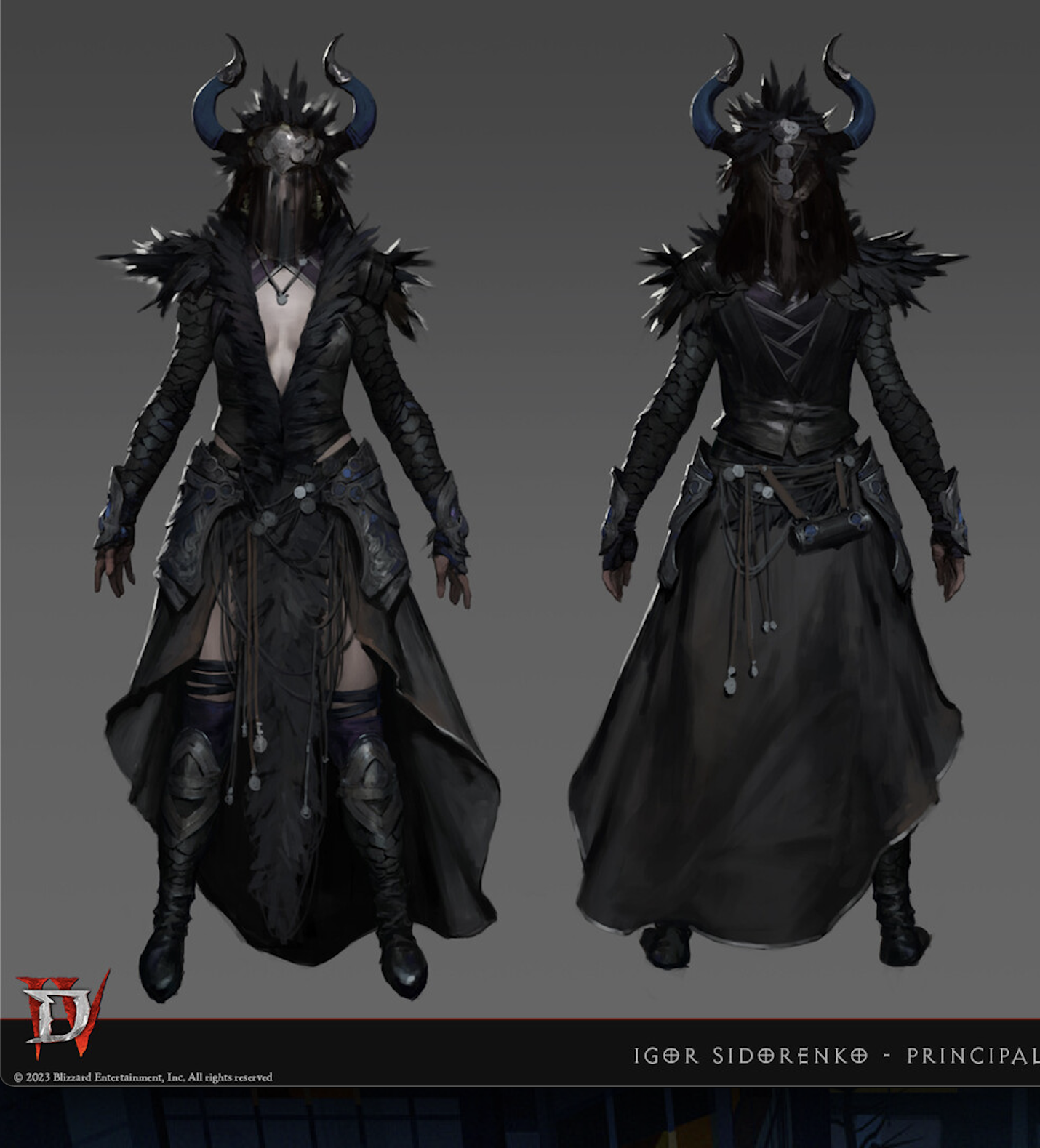The BRAWL² Tournament Challenge has been announced!
It starts May 12, and ends Oct 17. Let's see what you got!
https://polycount.com/discussion/237047/the-brawl²-tournament
It starts May 12, and ends Oct 17. Let's see what you got!
https://polycount.com/discussion/237047/the-brawl²-tournament
Retopologizing garments and baking overhanging details
Hi all,
I'm new to the forum but I've read a lot of wonderful info on here and this community is amazing so I figured I'd give it a shot to ask here before I try and reinvent the wheel on my character project.



Concept: 

I have a few questions regarding the retopologizing into baking normal map work flow for game characters.
What you can see on my character model are a lot of thin, overhanging flaps on the sleeves of her shirt. I'm wondering if anyone has suggestions on the best way to retopologize something like this so that the overhanging VDM details are actually transferred into the final low poly via normal maps.
The reason why I'm anxious about this whole process is that I've remade this shirt a few times already, each time with a new method, because the geometry simply refuses to project / zremesh from dynamesh into a clean topology. This time I've been more cautious, duplicated older versions, and applied the leather flaps on their own layer as opposed to a destructive workflow, however now that I have a clean, subdvided high poly, I'm totally worried about the retoplogizing and baking phase. Could I retopologize this with flat faces following the form of the sleeve like a cylinder, or do I need to manually retopologize every little fold, divet and overhang in order to make sure that the details actually bake proeperly?
Thank you so much for any insight. If I'm just approaching this completely wrong I'm open to new workflows or suggestions.
Also, when retopologizing clothing, do I need my low poly to account for the thickness of the high poly material, or can that also be baked in via normal maps? Like can it just be the edgeloops and vertices without any thickness, or do I need to include vertices and edgeloops for the width and inside of the garment?

Replies
Personally I would stay away from real thickness of garment. It would probably intersect itself a lot during animation/simulation.
I'm expecting to do some back and forth with tweaking the bakes once I get there but as long as I'm headed in the right direction with it then I can feel better about moving on to other parts of the HP sculpt.
and it use alpharef (0 or 1) for the alpha.
obviously needs more work
some of the issues are there's quite a lot of over draw and at acute angles you can see through the mesh if each ring differs to greatly from the next (though too close may cause clipping issues) so may require addition internal solid geometry to hide this adding to the overdraw